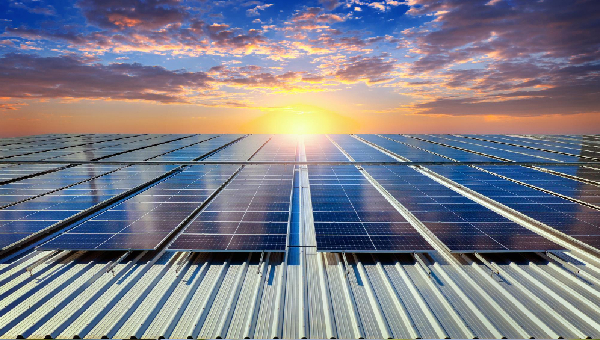Sunshine to Socket: The Journey of Solar Energy from Panels to Power Grids

The sun creates a lot of energy as a result of nuclear fusion reactions taking place in its core. This power needs to be converted into electricity by solar panels. These panels are also referred to as clean and renewable because they do not produce any harmful byproducts or emissions while generating electricity from environmental sources such as the sun. What exactly happens to sunlight, which is abundant but largely untapped, for it to become the current that powers our factories and homes? Let’s follow the astonishing path of solar power from where it collects warmth right down to how it pulsates through the system lighting up ordinary life.
Capturing Solar Energy: What do Solar Panels do?
Photovoltaic (PV) cells are at the core of converting sun power into electricity. Solar modules comprise many of these units packaged together; they work together or individually depending on their size or capacity. Normally made from semiconducting materials like silicon, when exposed to light rays, PV cells absorb some photons thereby releasing electrons which then flow through attached wires creating direct electric current (DC).To cover wider ranges across different frequencies within the sunlight spectrum various types of solar panels with multiple PV cell layers are used; their efficiency depends greatly upon temperature conditions do most work best under cool environments where large heat sinks can be incorporated – this is why you might find them mounted onto roofs and other surfaces at homes or arrays in fields known as solar farms.
From DC to AC: Changing Currents
Electricity created by solar panels is in direct current (DC), like batteries. However, most appliances and the power grid use alternating current (AC). Inverters are what make this possible. Depending on the equipment connected to the source, it converts DC output from solar panels to AC source then feeds back to the main source which connects homes and businesses.
Supervision and Repair
Solar systems should be constantly checked up on and maintained so that they work properly for the longest time possible. With new technologies, monitoring has been made easier as one can track real-time power production hence identifying where the system is underperforming or any part of it working inefficiently. Common maintenance tasks include cleaning modules so they’re free from dirt or debris which may block sunlight from getting through; checking connections between panels and inverters/charge controllers/batteries etc., for signs of wear/loose joints; ensuring panels are sited at the correct angle facing southwards where they’ll get most light during winter months etc. This will help extend their life span while maximizing energy output.
Integration with the Grid: Filling in the Blanks
After being transformed into an alternate current, solar power can be connected to an electrical grid. One way of doing this is using an inverter that links up a local distribution network with a solar array. In systems tied to the grid, excessive electricity produced by solar panels can flow back to it thereby making it possible for users to save on energy and even receive credits under net metering arrangements. There are many advantages associated with integrating solar energy into mains power systems including reduced dependence on fossil fuels, lower emissions of greenhouse gases, and increased self-sufficiency in terms of power supply. Additionally, such a move promotes robustness and decentralization within the energy sector leading to less disruption susceptibility.
Difficulties and Opportunities
Moving Forward the star is a mighty renewable energy resource that can pave the way for our sustainable future. However, there are some obstacles in our path if we want to tap into this potential. One problem is that it relies heavily on weather variation and intermittent sunshine which makes it difficult for power plants to be reliable. Despite this fact though, storage technologies have been improving significantly over time with batteries being one example among many others like grid-scale storage systems; these advancements provide an opportunity for stabilizing our electricity supply in the face of such challenges. Furthermore, global adoption rates could be accelerated through policy support coupled with investments in solar infrastructures worldwide. The use of incentives should not be overlooked either since they can help bring down the cost of deploying panels as well as setting up regulatory frameworks that will foster their uptake.
The Upcoming Time of Solar Energy: New Innovations and Progress
As far as solar equipment is concerned, it is continuously updated which means that there are more chances for it to change the entire world’s energy sphere. The most important issue here is to make thin-film batteries, and biface panels and unite them with storage systems to make them more effective, cheaper, and flexible. Also, the development of material science together with nano-technology plus artificial intellect can provide additional efficiency gains as well as scalability options for solar power production worldwide. Therefore, we need all sorts of things from photovoltaics integrated into buildings up to floating sun farms because just like the sunlight itself they have unlimited potential too.
Conclusion
From those little packets of light to turning lights on, how we get power from solar panels to the grid shows what people can achieve when they put their minds together and think outside the box. Once we start tapping into all that limitless energy provided by our nearest star –– Earth’s most abundant resource –– then the sky isn’t even the limit anymore for how much brighter our collective future could be! We just need more time tinkering around with this stuff… every day brings us closer to understanding exactly what needs doing next until eventually there won’t be any shadows left between here and there








